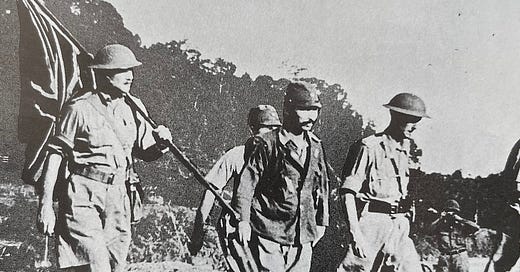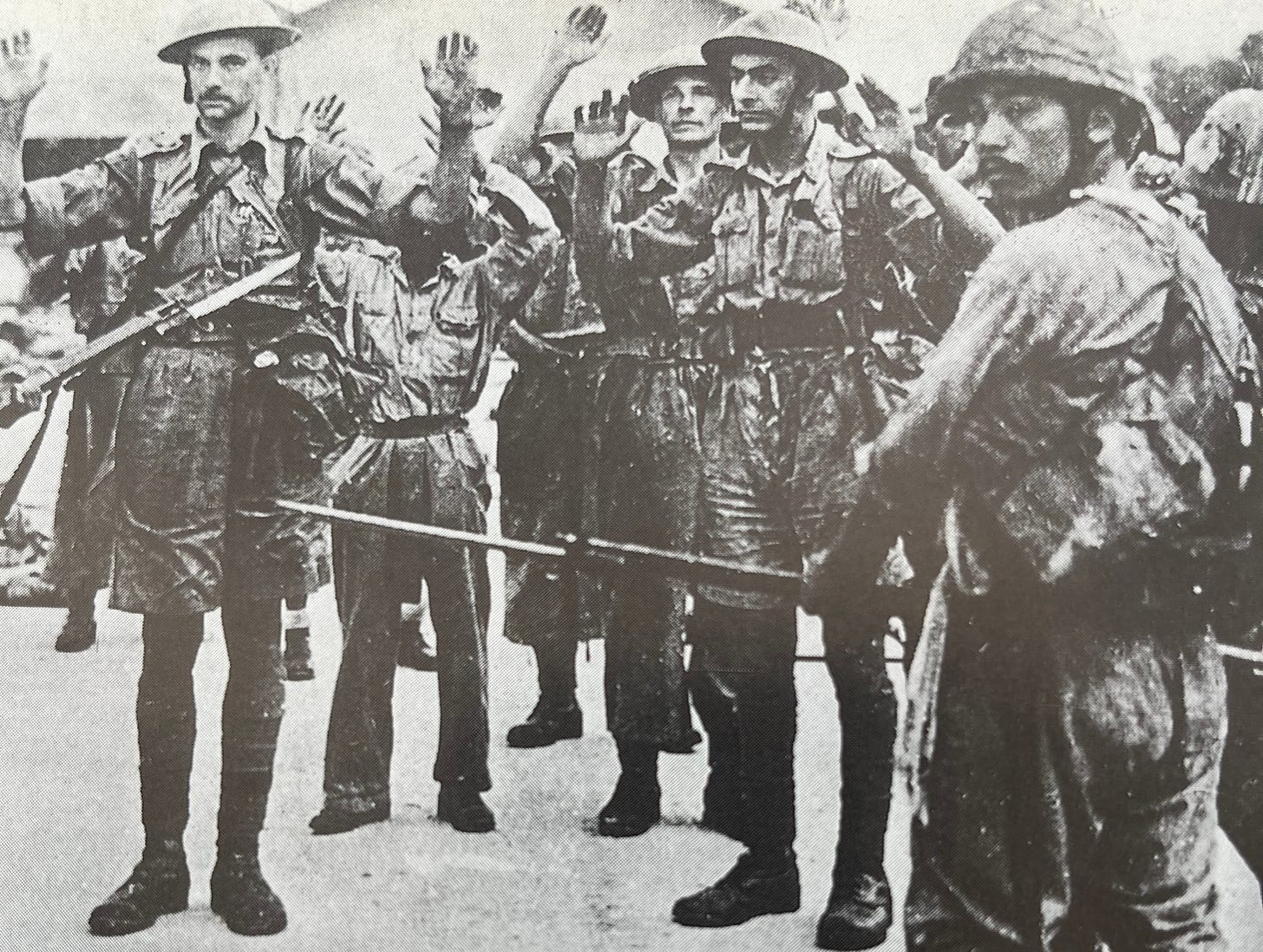Britain's crushing defeat at Singapore in 1942: beginning of the end of the Empire
How the myth of the Europeans' natural right to rule was broken once and for all
By DAVID MYTON
When we think of the great consequential battles of World War II certain “classics” spring to mind such as Dunkirk, Barbarossa, Stalingrad, and Normandy.
There’s another battle, though, that’s often overlooked when it comes to considering its longer-term significance.
And that’s the battle for Singapore from December 8, 1941 - if we take the beginning as the Japanese landings at Kota Bharu in Malaya - to the British surrender on the February 15, 1942.
The Japanese forces not only beat the British in a swift campaign, they also out-fought and out-thought their imperial opponents.
Britain’s Prime Minister Winston Churchill called it “the worst disaster and largest capitulation in British history”.
There’s a photograph (dated Sunday February 15 1942) that neatly sums it up. It shows the British commander Lieutenant General Arthur Percival and other senior officers on their way to sign the surrender documents.
They look absolutely crushed and desolate. More than 8000 Allied soldiers were killed or wounded during the campaign and around 130,000 taken prisoner.
With his protruding front teeth and loping, gangly frame, Percival appears to be a caricature of British military incompetence.
To be fair, Percival was a brave and loyal soldier who had served for many years in the British Army, and had seen plenty of action – but Singapore was a battle too far for him.
Japan’s General Yamashita’s 25th Army, with a combat strength of about 65,000 soldiers, landed at Singora and Patani in Thailand, and at Kota Bharu in Malaya on December 8, 1942 – just one hour before the attack at Pear Harbour.
The Bicycle Blitzkrieg
Elements of the force promptly launched a “bicycle blitzkrieg”, employing pre-concealed bikes to speed up their advance across the difficult jungle-covered terrain.
Percival’s forces amounted to around 88,000 troops comprising 19,000 British soldiers, 15,000 Australian, 37,000 Indian, and 17,000 Malays, according to the military historian Basil Liddell Hart in his History Of The Second World War.
Percival and his aides had not expected an attack on Singapore via the Malay peninsula, and neither had anyone else of importance in the British government.
They had seen what they wished to see - a sea-born invasion from the south.
Singapore represented the pride and glory of the British Empire. Its magnificent naval base had been completed in 1939 at a cost of millions of pounds. It was thought to be impregnable.
However, its protective artillery was constructed with a seaborne invasion from the south in mind - not one that swept down the Malay peninsula with an improvised crossing of the Johor strait to the north.
It’s a myth that the guns couldn’t turn to fire northwards inland; however their armoured-piercing ammo was designed to sink ships - not bombard advancing infantry with shrapnel.
The island had no significant defensive armaments in the north landward side of the city at all.
Churchill says he was unaware of this. “I ought to have known, my advisers ought to have known, and I ought to have been told, and they ought to have asked. The possibility of Singapore having no landward defences no more crossed into my mind than that of a battleship being launched without a bottom,” he wrote.
A further disaster unfolded on December 9 1941 when Japanese aircraft sank a so-called deterrent force of two elderly battleships - the Prince of Wales and the Repulse, with the loss of hundreds of lives including the force commander Admiral Sir Tom Phillips.
So why was this battle so significant?
British and European prestige shattered
In the words of the historian James Joll the British defeat “signalled that the myth of the Europeans’ natural right to rule was broken once and for all”.
Liddell Hart said that the longer and wider effects of Singapore’s fall were beyond repair. “Its easy capture was shattering to British and European prestige in Asia,” he wrote.
“The white man had lost his ascendancy with the disproof of his magic. The realisation of his vulnerability fostered and encouraged the post-war spread of revolt against European domination or intrusion.”
The author Guy Arnold has another take on it in his book Africa: A Modern history 1945-2015.
When the war began in 1939, he writes, the African empires of the European powers were intact, and few colonial administrators or politicians of the metropolitan countries had given much thought to the possibility of African independence.
“But the war was to change all that. The fall of Singapore was not just a traumatic loss for the British, but far more significantly it was the defeat of whites by non-whites,” he writes.
“The war would call into question the very existence of colonialism.”
Nationalism and military skills
Furthermore, Arnold adds, many Africans actually served in the Allied armed forces during the war.
“Ironically this fact ensured that after the war the British Empire was doomed since during the course of the struggle Britain had forged an instrument for its termination by teaching black soldiers the nationalism and the military skills essential to the empire’s demise,” he writes.
By May 1945 the total number of Africans serving in British military units amounted to 374,000, while the total from all colonies excluding India and the Dominions came to 437,000.
Many thousands of African soldiers learned new skills and travelled widely to places such as India, Burma, Palestine and other countries where they acquired new ideas and obtained a broader outlook on the world and its politics.
They did not want to be in anybody’s empire. They wanted their own sovereign, independent nations.
At the war’s end in 1945 Churchill insisted the British Empire would continue as it “possessed superior statecraft and experience”. In a world of 2.3 billion people, more than 600 million were still subjects of the King of England.
But post-1945 the rot set in. Britain was deep in debt and going broke. By the time of the 1955 Suez fiasco the Empire was unravelling, and within 40 years it was gone.
References
Guy Arnold, Africa. A Modern History 1945-2015, Atlantic Books, London, 2017.
Winston S. Churchill, The Second World War, Vol 4, The Hinge of Fate, Reprint Society Ltd, 1951.
Peter Elphick, Singapore: The Pregnable Fortress. A Study in Deception, Discord and Desertion, Hodder & Stoughton, 1995.
B.H. Liddell Hart, History of the Second World War, Book Club Associates, London, 1970.
James Joll, Europe Since 1870, Pelican Books, 1976.
Derek Leebaert, The World After The War. America Confronts The British, 1945-1957, Oneworld Publications, 2020.





